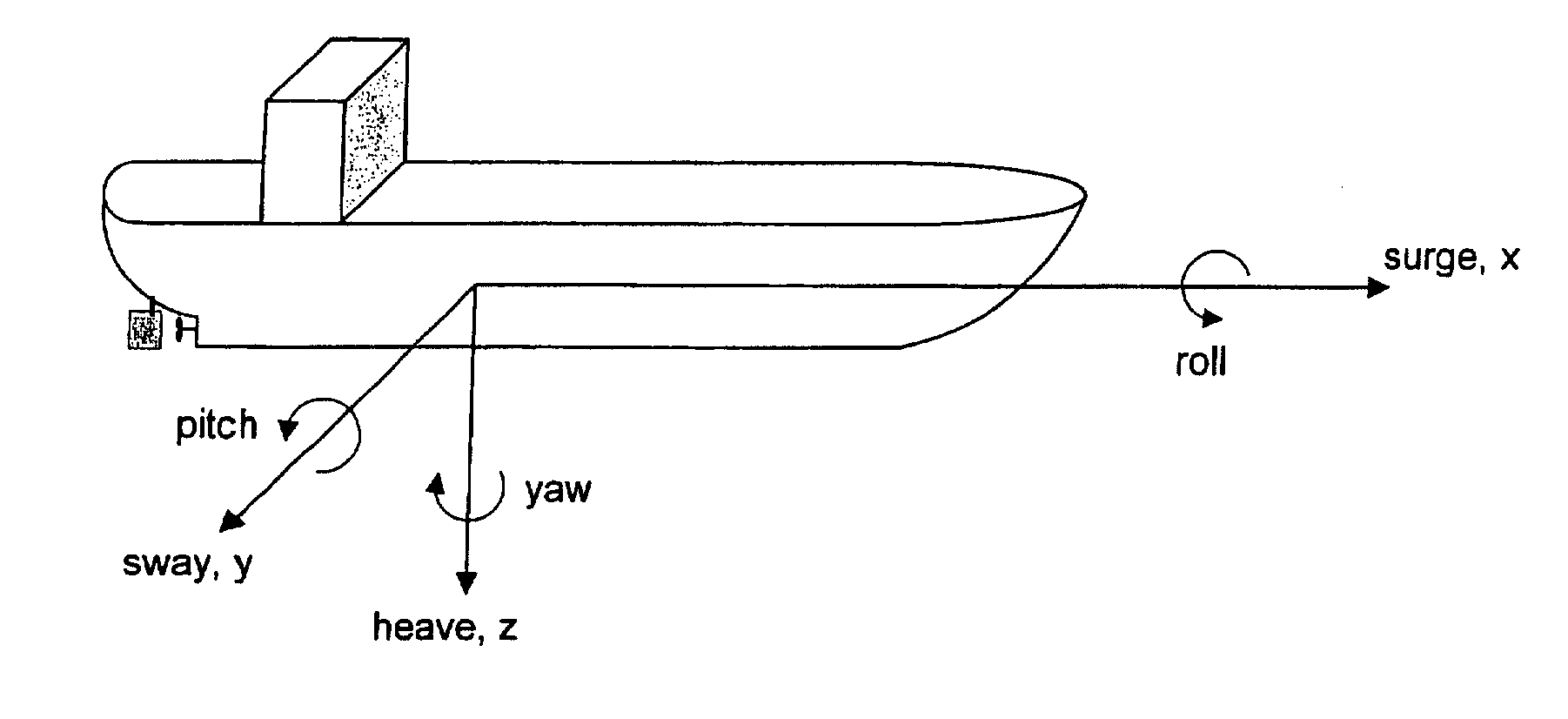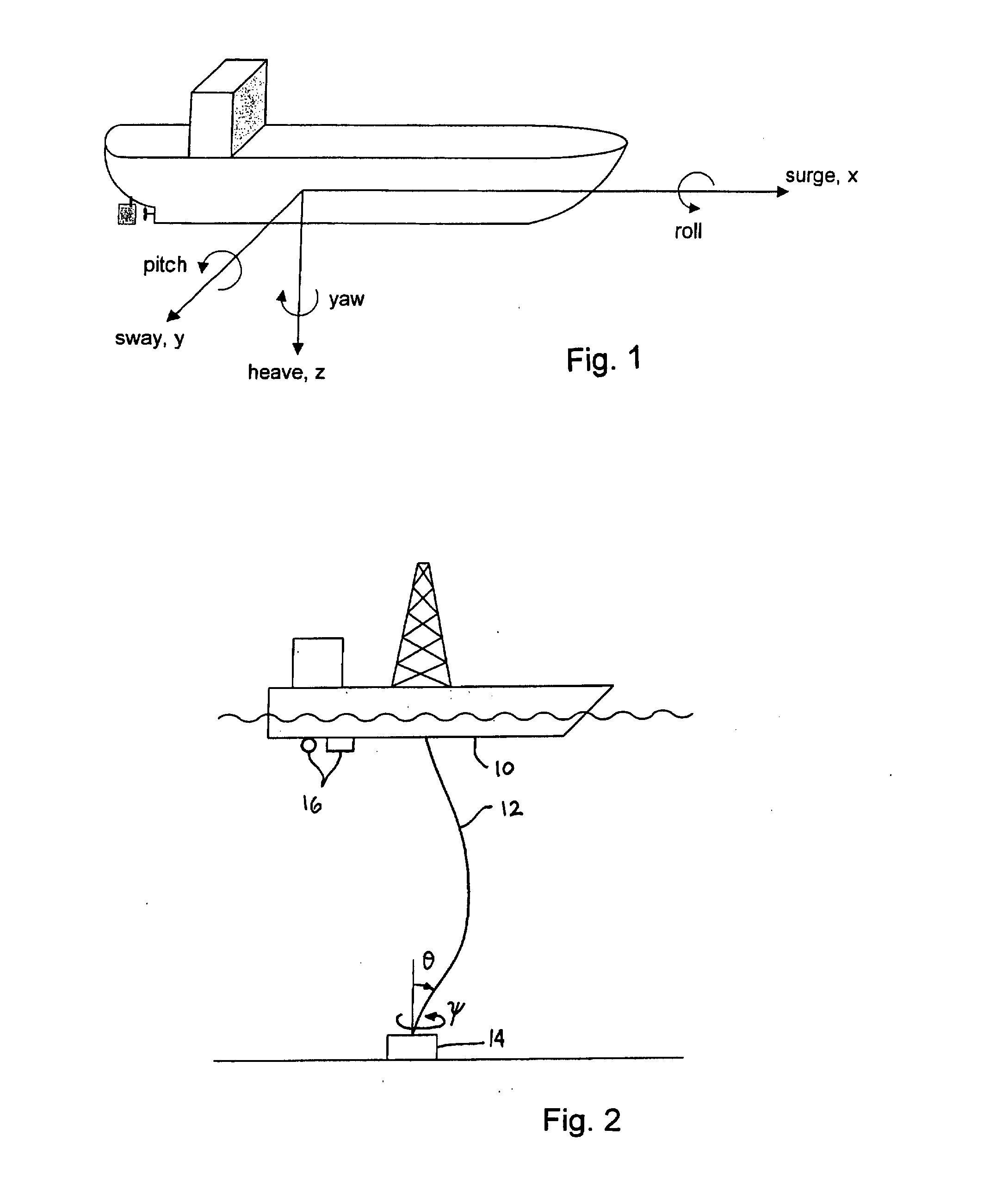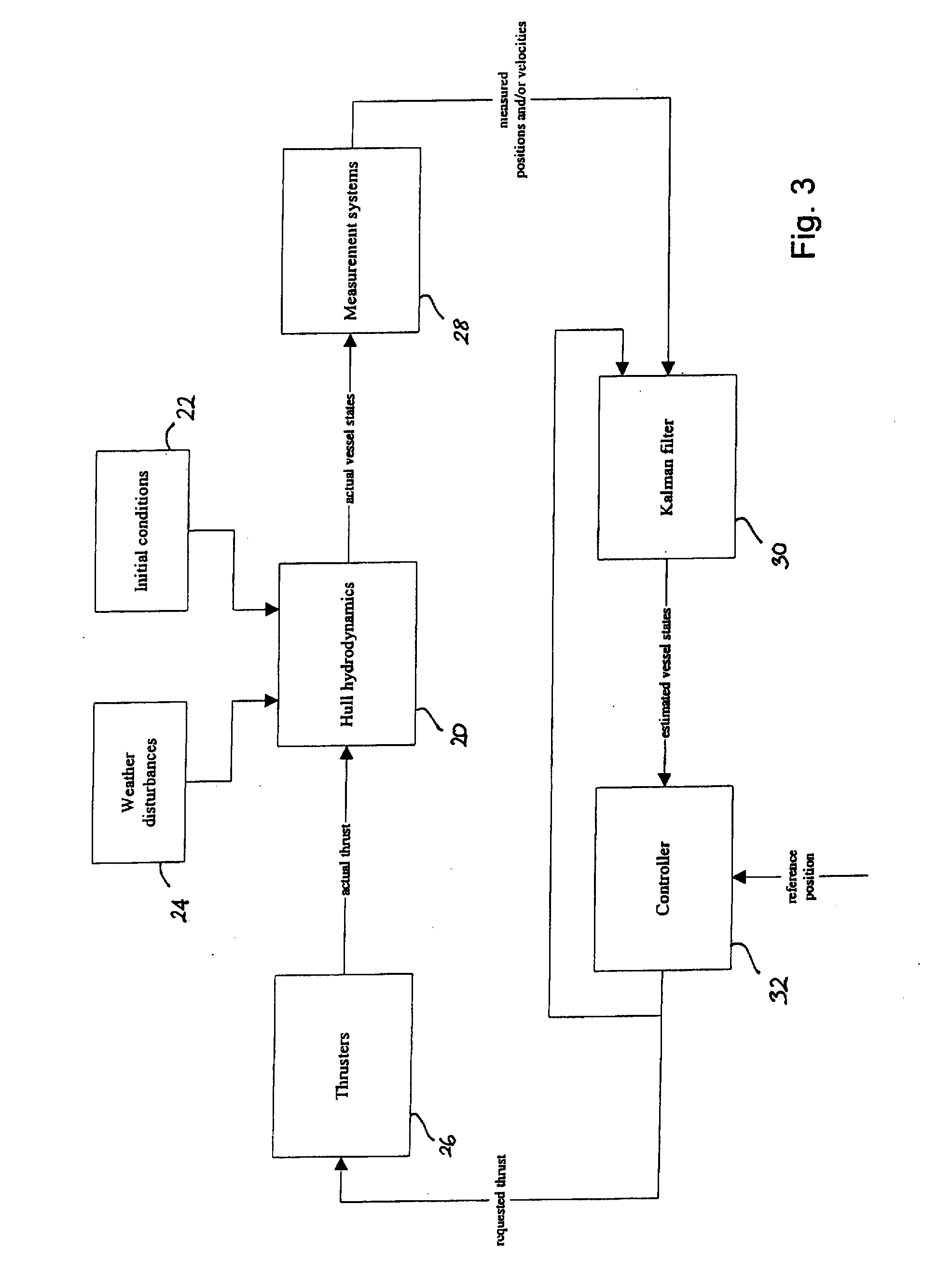Dynamic positioning of marine vessels
a technology of dynamic positioning and marine vessels, applied in the direction of steering initiation, instruments, vessel construction, etc., can solve the problems of affecting the safety of personnel or equipment, affecting the environment, and the measurement of position in surge and sway has proved to be more complex, so as to eliminate the disadvantages of individual measurements, reliable and stable estimation of vessel position, and fast measurement of motion
- Summary
- Abstract
- Description
- Claims
- Application Information
AI Technical Summary
Benefits of technology
Problems solved by technology
Method used
Image
Examples
Embodiment Construction
[0025]A preferred embodiment of the invention uses a Kalman filter (KF) to combine measurements of vessel velocity, vessel heading and riser bottom angle with any other position measurements that may be available in order to estimate the vessel's position and heading and dynamically control them.
Basic Kalman Filter Equations
[0026]The basic KF equations (see, for example, {dot over (A)}ström and Wittenmark, Computer Controlled Systems: Theory and Design, 2nd Edition, Prentice-Hall International, Englewood-Cliffs, N.J., USA, 1990) are based on a discrete state space model of the ship as follows:
x(t+τ)=Φx(t)+Γu(t)+w(t) (1)
y(t)=Hx(t)+v(t) (2)
where x(t) is the state vector at time t, u is a vector of control inputs and feed-forward forces, y is a vector of measured outputs, τ is the sampling period whilst Φ, Γ and H are matrices defining the transitions of the state vector. w and v are noise processes acting on the states and the output respectively. w and v are assumed to be Gaussia...
PUM
 Login to View More
Login to View More Abstract
Description
Claims
Application Information
 Login to View More
Login to View More - R&D
- Intellectual Property
- Life Sciences
- Materials
- Tech Scout
- Unparalleled Data Quality
- Higher Quality Content
- 60% Fewer Hallucinations
Browse by: Latest US Patents, China's latest patents, Technical Efficacy Thesaurus, Application Domain, Technology Topic, Popular Technical Reports.
© 2025 PatSnap. All rights reserved.Legal|Privacy policy|Modern Slavery Act Transparency Statement|Sitemap|About US| Contact US: help@patsnap.com



